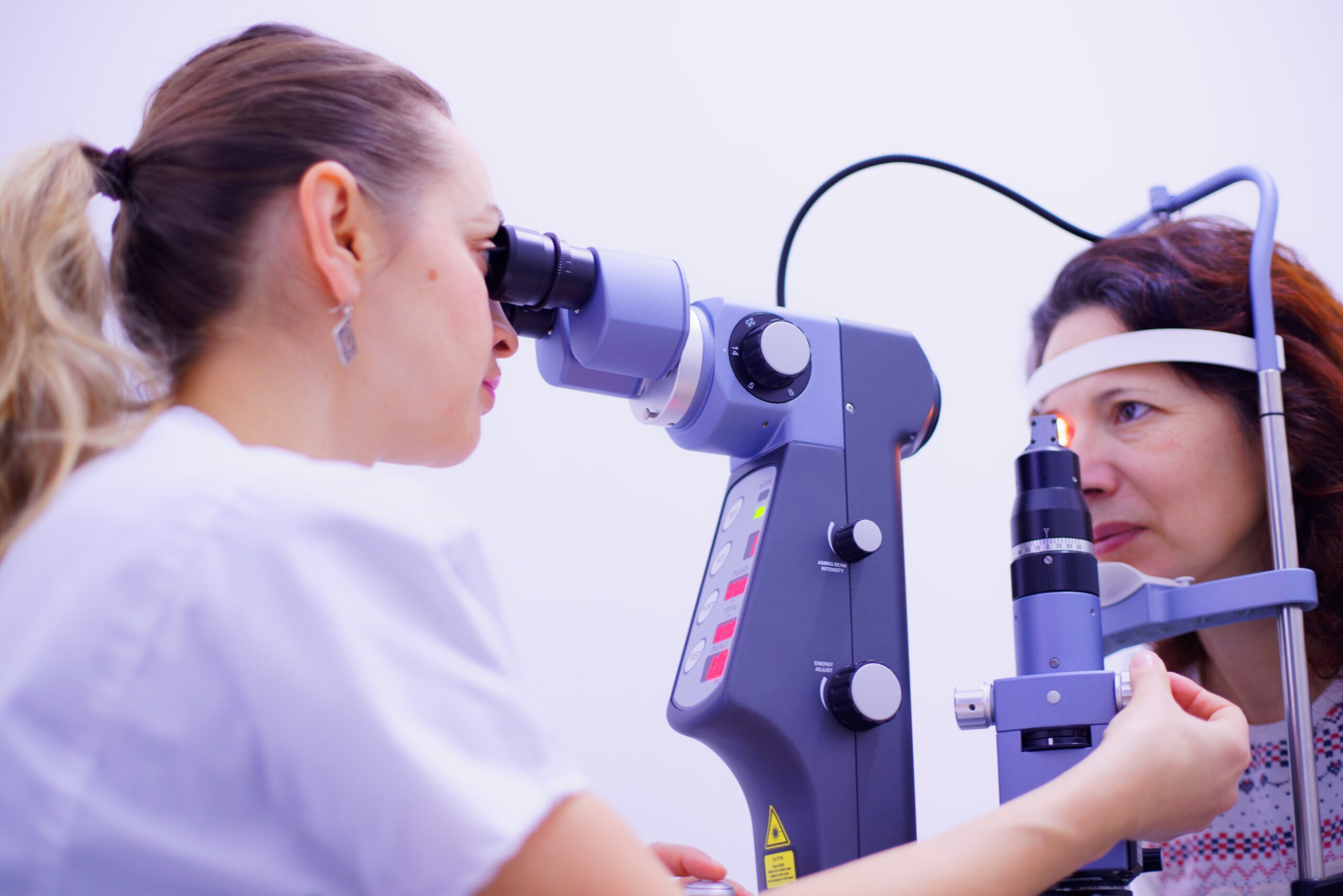We live in a world where screens are everywhere. From the moment you wake up and check your phone, through long hours of work on your laptop, to winding down with TV or scrolling social media at night, your eyes rarely get a break. This constant exposure leads to digital eye strain, often called screen fatigue or computer vision syndrome. If you feel your eyes burning, watery, or blurry after prolonged screen time, you’re not alone. Millions of people experience these symptoms daily. The good news is you don’t need expensive glasses or medical treatments to protect your eyes. By learning how to protect eyes from mobile and computer screens naturally, you can adopt simple habits that actually work. In this detailed guide, we’ll cover proven, practical strategies that reduce strain and keep your vision healthy.
What Is Screen Fatigue and Why Does It Matter?
Screen fatigue is a modern lifestyle problem caused by excessive digital exposure. The most common symptoms include dry or irritated eyes, blurred or double vision, headaches, and even neck or shoulder stiffness. According to the American Optometric Association, nearly 60% of adults experience symptoms of digital eye strain regularly. While this condition doesn’t usually cause permanent damage, ignoring it can affect your productivity, sleep quality, and daily comfort. Protecting your eyes naturally ensures not only better comfort now but also long-term vision health.
Natural Strategies to Protect Eyes from Screens
Follow the 20-20-20 Rule
The 20-20-20 rule is one of the most effective, natural ways to give your eyes a break. Every 20 minutes, look at an object at least 20 feet away for 20 seconds. This practice relaxes eye muscles, helps them refocus, and prevents overexertion. You can even set gentle reminders on your phone to ensure consistency.
Blink More Often
Studies show that when focusing on screens, people blink up to 60% less than normal. Blinking spreads tears evenly, keeping your eyes moist and refreshed. When you forget to blink, your eyes become dry and irritated. Try to consciously blink every few seconds, and if possible, practice “full blinking,” where you close your eyes completely for a second before reopening. This simple, natural step helps prevent dryness and discomfort.
Adjust Screen Brightness and Settings
Your screen should be comfortable to look at, not overly bright or dim. Adjust brightness to match your room’s lighting. If your phone or laptop feels like a flashlight in the dark, lower the brightness. Use “night mode” or blue-light filters in the evening to reduce strain and improve sleep. Increasing font size also prevents squinting and unnecessary tension in your eye muscles.
Optimize Your Workspace
The way you position your devices plays a big role in how your eyes feel. Keep your screen about an arm’s length (20–24 inches) away and slightly below eye level. If it’s too close or too high, your eyes and neck will strain. Minimize glare by using curtains, blinds, or anti-glare filters. Combine overhead lighting with soft ambient light to avoid harsh contrasts. A supportive chair and good posture will also reduce neck and shoulder strain, which indirectly relieves your eyes.
Take Regular Breaks from Screens
Apart from micro-breaks, your eyes need longer breaks during the day. Every hour, step away from your device for 5–10 minutes. Look outside at distant objects or greenery to give your eyes and mind a chance to reset. These breaks reduce fatigue, boost concentration, and improve overall energy.
Use Natural Lighting Wisely
Natural light is easier on your eyes than harsh artificial light, but too much glare can cause problems. Place your screen perpendicular to windows instead of directly in front of or behind them. Use sheer curtains to soften sunlight when necessary. Proper lighting reduces squinting and prevents unnecessary strain.
Stay Hydrated

Dehydration contributes to dry eyes. Drinking enough water throughout the day ensures your tear glands function properly. If you spend long hours in air-conditioned or heated rooms, hydration becomes even more critical because these environments reduce natural moisture in the air. Aim for at least eight glasses of water daily to keep your eyes comfortable and lubricated.
Eat Foods that Support Eye Health
Nutrition is one of the most natural defenses against eye fatigue. Include foods rich in essential vitamins and minerals that support vision. Vitamin A from carrots, sweet potatoes, and spinach protects your cornea. Vitamin C from oranges, bell peppers, and berries prevents oxidative damage. Vitamin E from almonds and sunflower seeds reduces free radical damage. Omega-3 fatty acids from salmon, walnuts, and flaxseeds improve tear quality. Lutein and zeaxanthin from kale, broccoli, and corn protect against light-induced damage. A balanced diet packed with these nutrients naturally strengthens your eyes against screen stress.
Practice Palming and Eye Exercises
Eye relaxation exercises can reduce muscle tension and restore focus. Palming is a simple method where you rub your hands together to create warmth and gently cover your closed eyes for a minute. This relaxes the optic nerves and provides instant comfort. Other exercises include rolling your eyes in circles, shifting focus between near and far objects, and squeezing your eyes shut for a few seconds before opening them wide. Practicing these daily can significantly reduce strain.
Maintain Good Posture
Your posture impacts eye health more than you might think. Slouching brings the screen closer to your face, forcing your eyes to work harder. Sit upright with your back supported, shoulders relaxed, and feet flat on the floor. Proper posture keeps your eyes at a safe distance from screens and prevents unnecessary tension.
Control Blue Light Exposure at Night
Blue light from screens doesn’t cause permanent damage at normal exposure levels, but it can disrupt melatonin production, making it harder to fall asleep. Poor sleep contributes to eye fatigue the next day. Reduce blue light exposure by enabling night mode on devices, limiting screen use at least 30–60 minutes before bed, and using warm-toned lamps in the evening. This simple habit improves sleep and overall eye health.
Daily Routine Checklist for Healthy Eyes
Start your day with a glass of water and five minutes of eye exercises. While working, follow the 20-20-20 rule and blink frequently. Adjust screen brightness and keep your posture in check. At lunch, step outside and focus on distant greenery to relax your eyes. In the evening, practice palming for relaxation and avoid excessive blue light. At night, eat a nutrient-rich dinner with vegetables and omega-3 sources, then avoid late-night scrolling. Following this checklist consistently makes natural eye protection effortless.
When to See a Doctor

Natural remedies help most people, but if you experience persistent blurred vision, severe headaches, constant dryness, or sudden changes in eyesight, consult an eye specialist. Regular eye exams are important to detect early signs of issues like glaucoma, astigmatism, or presbyopia. Timely intervention ensures your eyes stay healthy long term.
Internal Resource
If you struggle with poor sleep after long screen use, check our guide on Healthy Sleep Habits for Better Vision to improve rest and reduce eye strain.
FAQs
How can I protect my eyes from mobile and computer screens naturally? You can protect your eyes naturally by following the 20-20-20 rule, blinking often, drinking enough water, eating eye-healthy foods, and optimizing your workspace.
Does reducing screen brightness help with eye strain? Yes, lowering brightness to match your environment reduces glare and makes reading more comfortable, which eases strain.
Which foods are best for protecting against screen fatigue? Foods like carrots, spinach, kale, salmon, walnuts, and oranges provide essential vitamins and nutrients for healthy eyes.
How long can I safely look at a screen? Experts recommend taking short breaks every 20 minutes. Continuous screen use without breaks increases the risk of digital eye strain.
Can blue light harm my eyes? While blue light from screens doesn’t cause permanent eye damage, it can contribute to discomfort and disrupt sleep cycles, so managing exposure is wise.
Conclusion
Screens are part of modern life, but your eye health doesn’t have to suffer. By making small but consistent changes like following the 20-20-20 rule, blinking more often, adjusting screen settings, eating nutrient-rich foods, and staying hydrated, you can protect eyes from screen fatigue naturally and effectively. Prevention is always better than cure, and these habits cost nothing but deliver lasting benefits. Start today with one simple step—dim your screen, blink consciously, or step outside for a few minutes—and notice the difference in how your eyes feel. Over time, these natural habits will build a strong defense against digital eye strain and ensure healthy vision for years to come.


